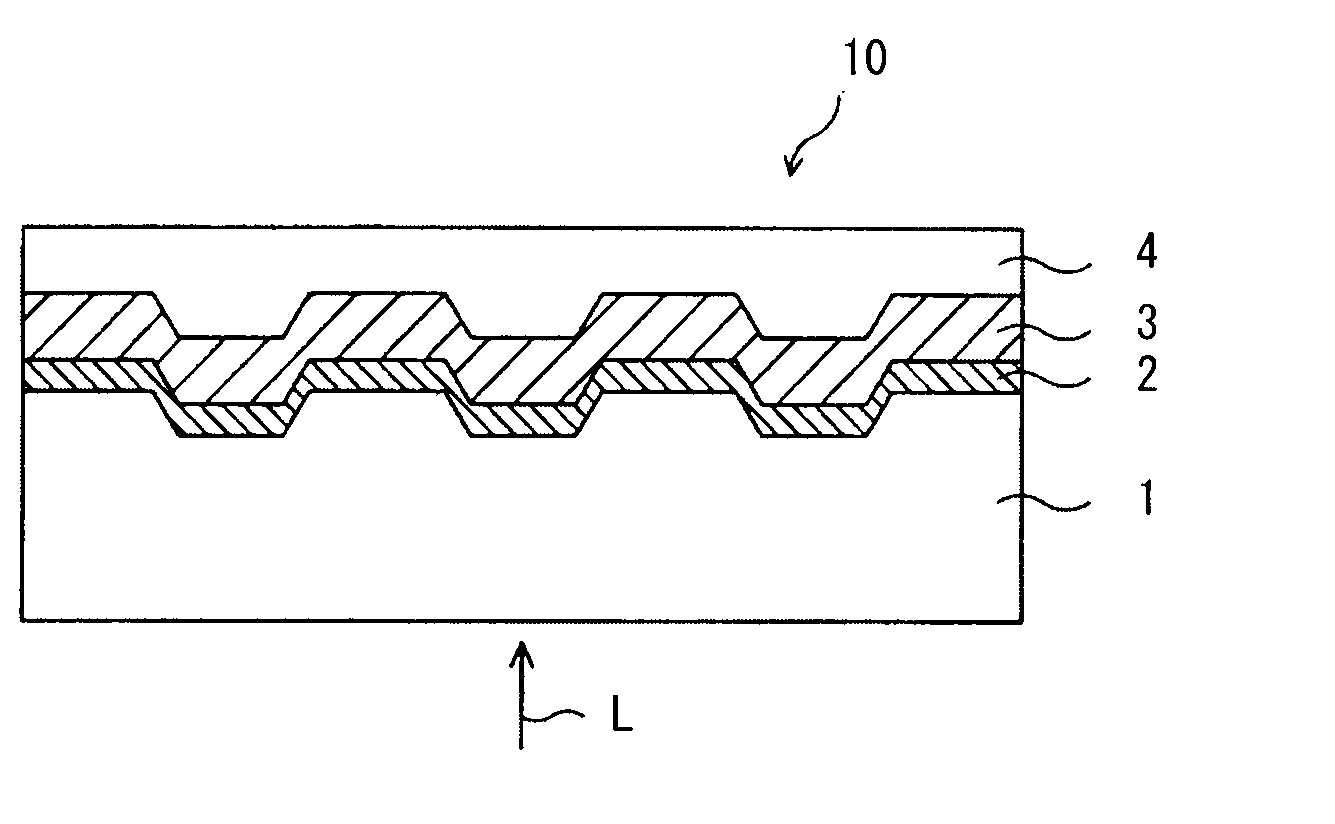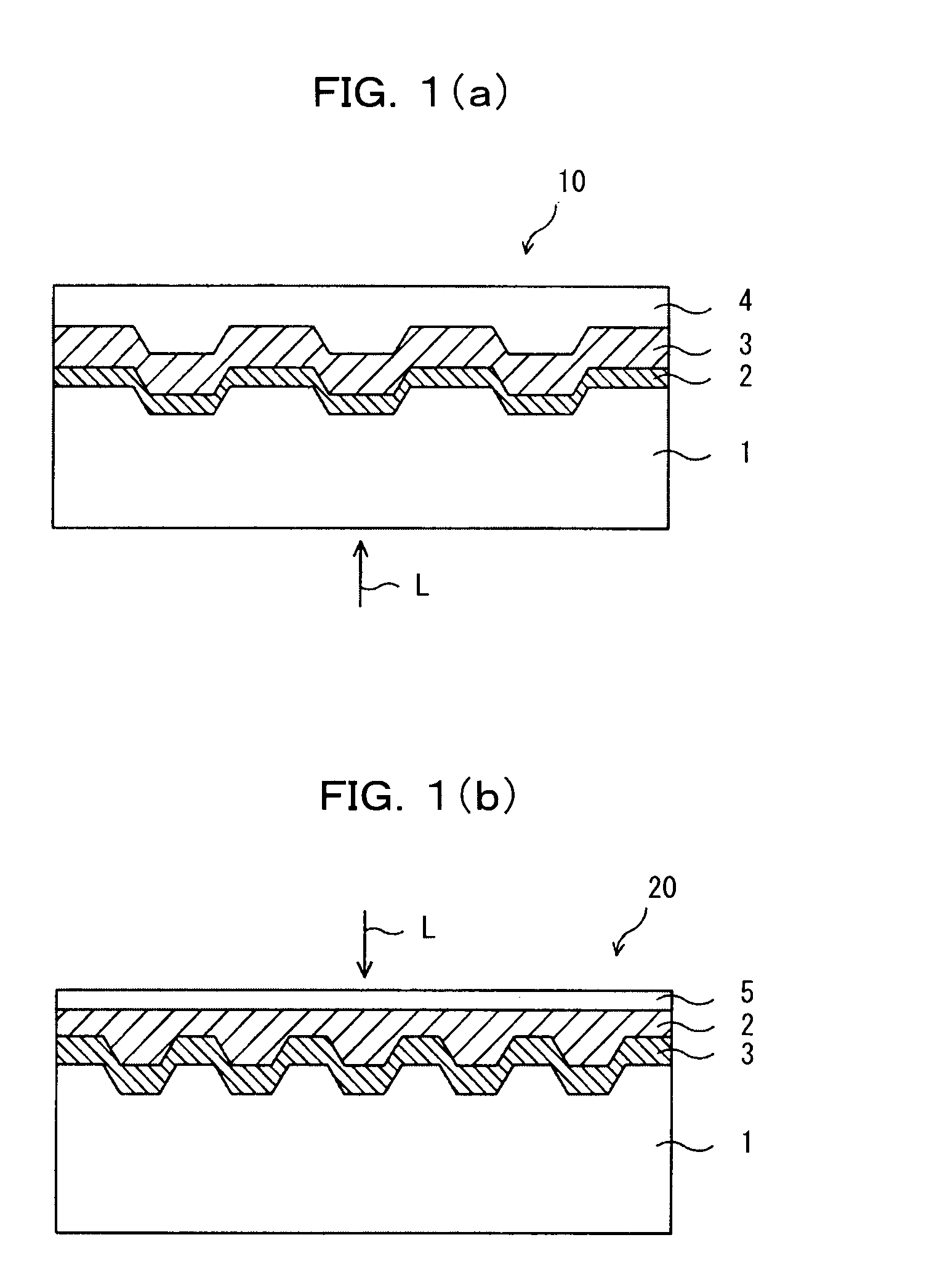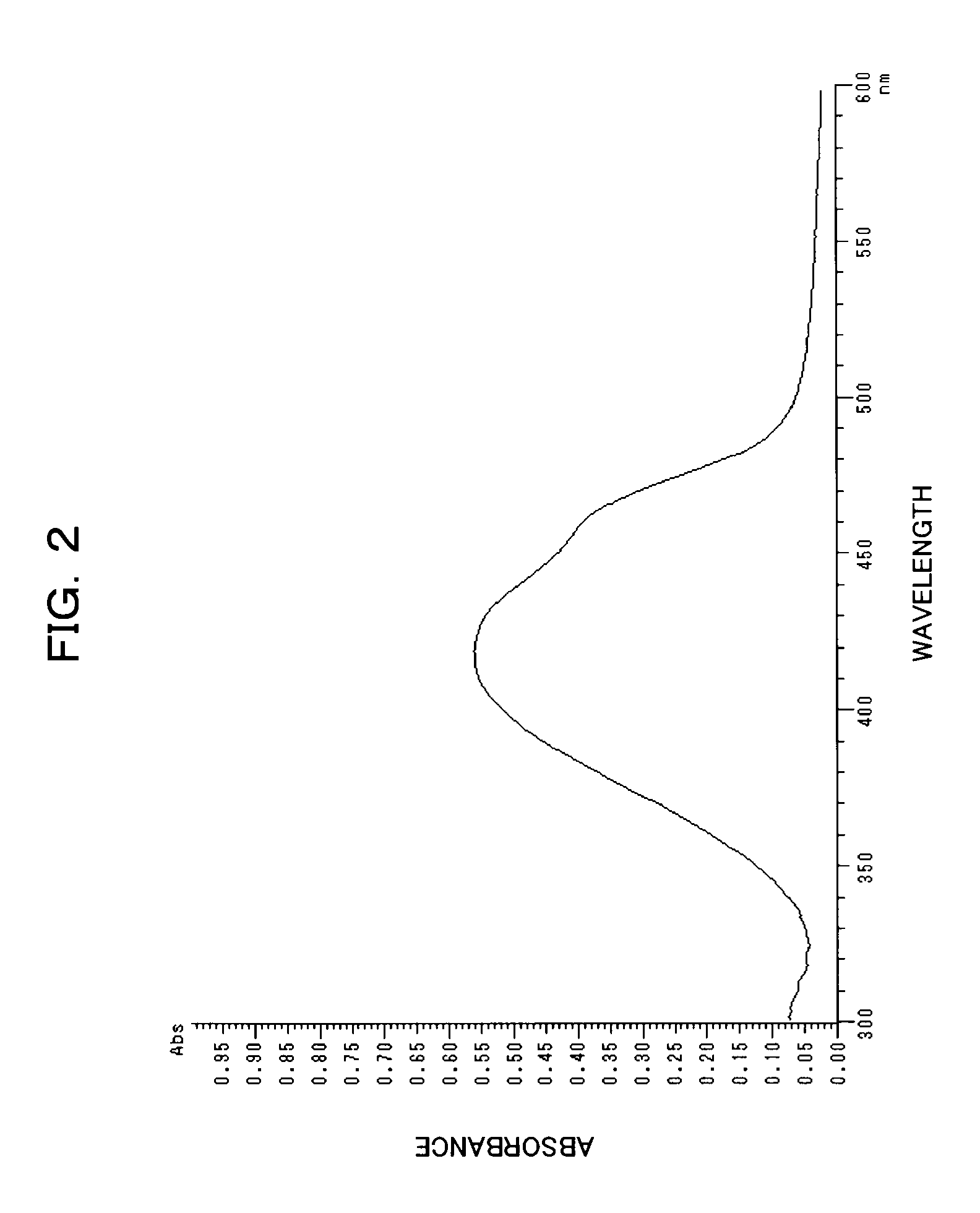Optical recording medium and azacyanine dye
- Summary
- Abstract
- Description
- Claims
- Application Information
AI Technical Summary
Benefits of technology
Problems solved by technology
Method used
Image
Examples
example 1
[0151]In 10 g of acetic acid, 2 g of 2-(1,3,3-trimethylindolin-2-ylidene)acetaldehyde and 2.43 g of 4-aminopentafluoroethylthiophenol were dispersed, and stirred for 6 hours at 80° C. The reaction mixture was spontaneously cooled, and poured into 200 ml of water, followed by addition of about 1 g of sodium iodide to precipitate crystal. The resultant crystal was filtered out. To the filtered crystal, 100 ml of acetone was added to dissolve the crystal. After insoluble matter was filtered off, the acetone was evaporated under reduced pressure. The resultant crystal was washed with diisopropyl ether (twice) and isopropyl alcohol (twice) to yield 2.93 g of yellow crystalline Exemplary Compound (1).
[0152]The resultant Exemplary Compound (1) had a maximum absorption wavelength (λmax) of 427 nm, and a molar absorption coefficient of 5.2×104 on measurement of absorbance in chloroform.
[0153]The resultant Exemplary Compound (1) was dissolved in octafluoropentanol into a concentration of 1 we...
example 2
[0154]In 10 g of acetic acid, 2 g of 2-(1,3,3-trimethylindolin-2-ylidene)acetaldehyde and 1.37 g of 3,4-(methylenedioxy) aniline were dispersed, and stirred for 2 hours at 80° C. The reaction mixture was spontaneously cooled, and poured into 200 ml of water, followed by addition of about 1 g of sodium iodide to precipitate crystal. The resultant crystal is filtered out. The filtered crystal was dissolved in 100 ml of acetone, and insoluble matter was filtered off, followed by evaporation of acetone under reduced pressure. The resultant crystal was washed with 50 ml of diisopropyl ether to yield 1.32 g of Exemplary Compound (2).
[0155]The resultant Exemplary Compound (2) had a maximum absorption wavelength (λmax) of 437 nm and a molar absorption coefficient of 3.9×104 on measurement of absorbance in chloroform.
[0156]Using the resultant Exemplary Compound (2), a dye-coated film was formed on a polycarbonate resin substrate as in Example 1. This coated film had a maximum absorption wave...
example 3
[0157]In 10 g of acetic acid, 2 g of 2-(1,3,3-trimethylindolin-2-ylidene)acetaldehyde and 1.40 g of 3-amino-5-tert-butylisoxazole were dispersed, and stirred for 5 hours at 50 to 60° C. The reaction mixture was allowed to cool, and poured into 100 ml of water, followed by addition of several grams of ammonium hexafluorophosphate (NH4PF6) to precipitate crystal. The resultant crystal was filtered out. The filtered crystal was stirred in 100 ml of water for 10 minutes, and then filtered out again. The resultant solid was dried to yield 2.79 g of yellow crystalline Exemplary Compound (15).
[0158]The resultant Exemplary Compound (15) had a maximum absorption wavelength (λmax) of 395.5 nm and a molar absorption coefficient of 4.2×104 on measurement of absorbance in chloroform.
PUM
 Login to View More
Login to View More Abstract
Description
Claims
Application Information
 Login to View More
Login to View More - R&D
- Intellectual Property
- Life Sciences
- Materials
- Tech Scout
- Unparalleled Data Quality
- Higher Quality Content
- 60% Fewer Hallucinations
Browse by: Latest US Patents, China's latest patents, Technical Efficacy Thesaurus, Application Domain, Technology Topic, Popular Technical Reports.
© 2025 PatSnap. All rights reserved.Legal|Privacy policy|Modern Slavery Act Transparency Statement|Sitemap|About US| Contact US: help@patsnap.com



